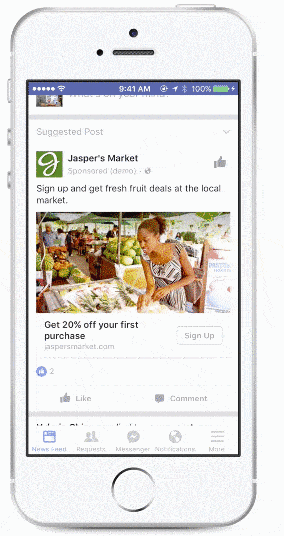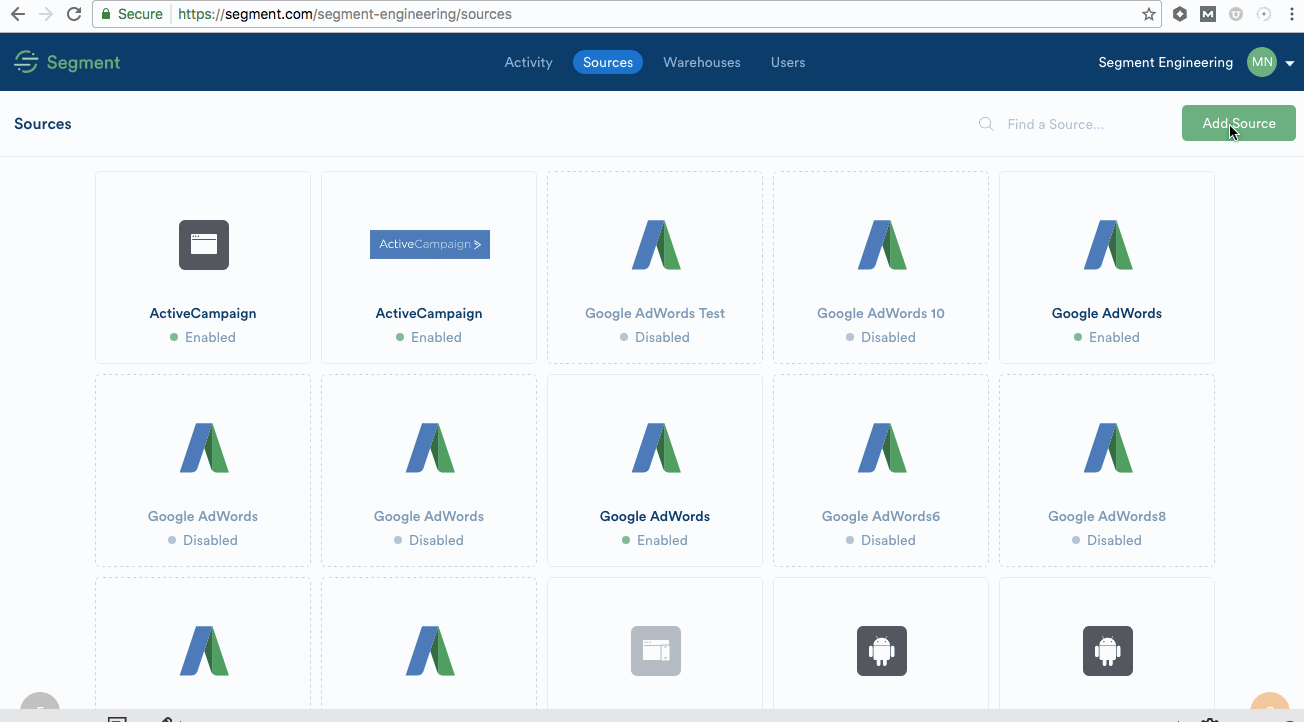Once you’ve added Facebook Lead Ads as a Source, you can connect it to a number of Destinations. In the above example, we used MailChimp, but there are multiple Destinations that can be connected to Facebook Lead Ads, including other email marketing tools, CRM, and analytics, and more.
That means you’ll be able to use that intent data to personalize a customer’s experience in a number of different channels, including your email campaigns. It’s an incredible personalization opportunity when a user tells you that they’re considering a specific product.
To connect a Destination, select Facebook Lead Ads in your Sources, then click Add Destination and search for your preferred platform. You can see the full list of destinations in the Segment Catalog.
Once you’ve configured your settings, Segment will automatically pull data from Facebook Lead Ads and send it to the destination. Within the email platform, you’ll be able to view and segment users based on their responses, and assign drip campaigns based on their interests.
You can also use Segment to help analyze the data you pull from your Facebook Lead Ads. You can use Segment to ETL data from Facebook Lead Ads directly to your data warehouse. Simply authenticate your Facebook Ads account and Segment will start pulling the relevant data and queuing it for your next data warehouse load.
Now that your Facebook Lead Ads data is available in your email tool, it’s time to build out campaigns.
Within your email tool, it’ll help you automatically filter segments of customers based on their Lead Ad answers. That means you can easily create email drip campaigns that cater to a customer’s specific interests.
In the above example, you might decide that users who are interested in canoes and kayaks (which you’re unable to ship) would prefer to receive information about shopping in-store.
In fact, let’s take a step back to add another layer to our Lead Ad example above: If a user selects Canoes & kayaks, you can use their selection to reveal a Conditional Answer Set: a set of questions with answers that change based on how someone answered a previous question. For example, if and only if the user selects the Canoes & kayaks option, they’ll then be prompted to answer one more question:




